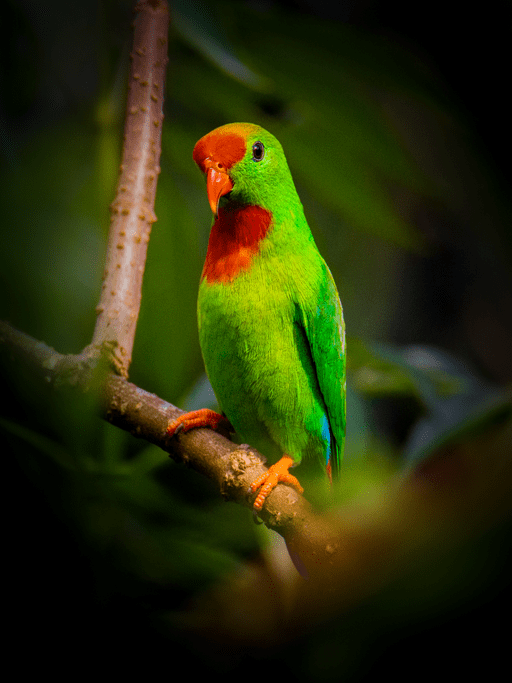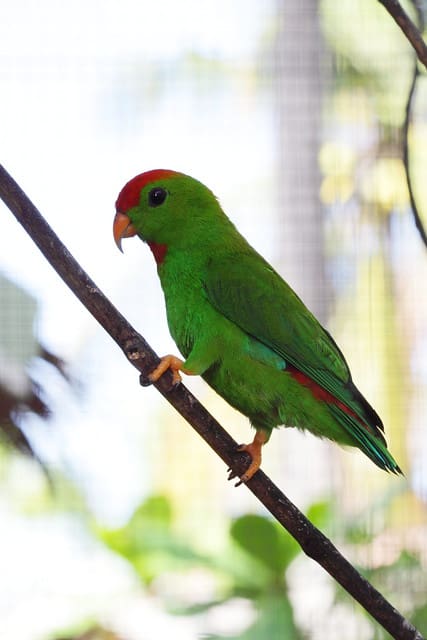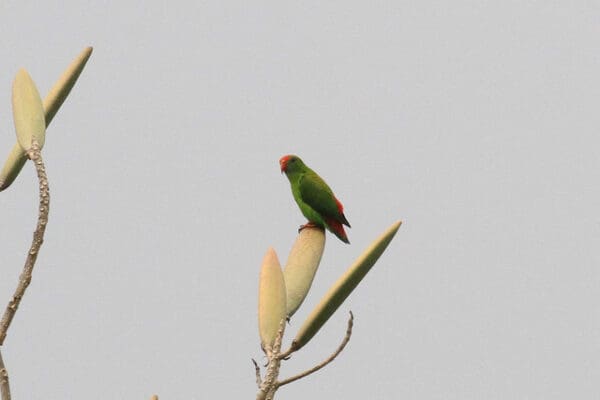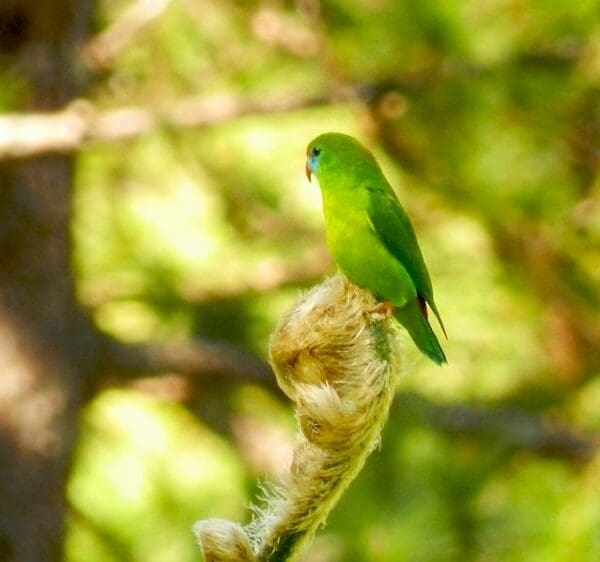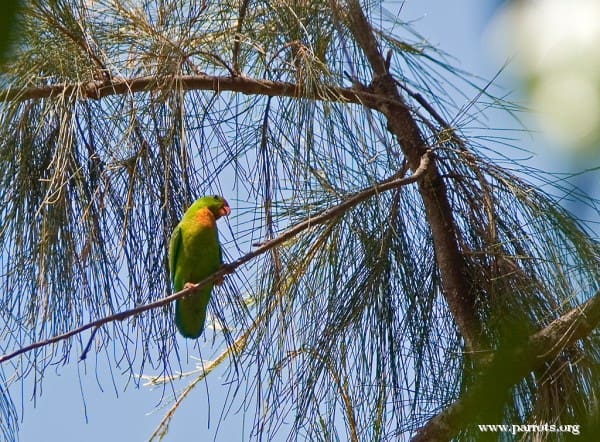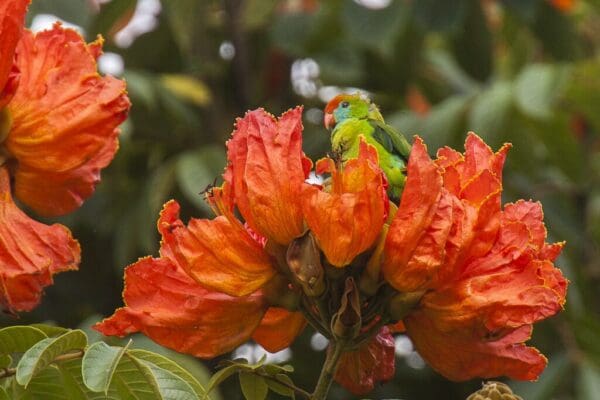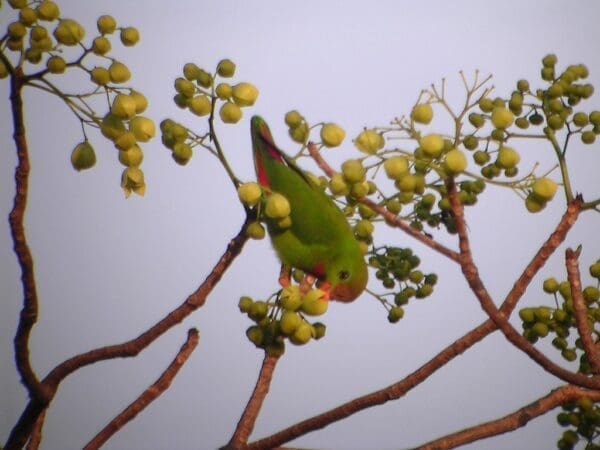Philippine Hanging Parrot
Also known as:
Colasisi, Luzon Hanging Parrot
Also known as:
Colasisi, Luzon Hanging Parrot
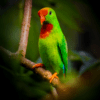
![© Klaus Stiefel [CC BY-SA 2.0] via Flickr A male Philippine Hanging Parrot perches on a branch](https://parrots.org/wp-content/uploads/2023/01/wpt_Philippine-Hanging-Parrot_1164-8-100x100.jpg)
![© Charles Davies [CC BY-SA 2.0] via Flickr A wild Philippine Hanging Parrot perches on a leaf](https://parrots.org/wp-content/uploads/2023/01/wpt_Philippine-Hanging-Parrot_1164-7-100x100.jpg)


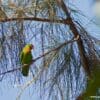

![© Francesco Veronesi [CC BY-SA 2.0] via Wikimedia Commons A wild female Philippine Hanging Parrot perches in blooms](https://parrots.org/wp-content/uploads/1990/09/Philippine-Hanging-Parrot-Francesco-Veronesi-100x100.jpg)
![© markaharper1 [CC BY-SA 2.0] via Wikimedia Commons A wild male Philippine Hanging Parrot feeds in a tree](https://parrots.org/wp-content/uploads/1990/09/Philippine-Hanging-Parrot-Mark-Harper-100x100.jpg)
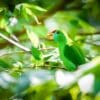
DID YOU KNOW?
The Philippine Hanging Parrot has occasionally been found to become intoxicated on fermenting coconut nectar.

Loriculus

philippensis
Size:
14 cm (5.5 in)
Weight:
32-40 g (1.1-1.4 oz)
Subspecies including nominate:
nine: L.p. philippensis, L.p. mindorensis, L.p. bournsi, L.p. regulus, L.p. chrysonotus, L.p. worcesteri, L.p. siquijorensis, L.p. apicalis, L.p. dohertyi
Colour Adult:
L.p. philippensis: Male-mainly green in colour; red forehead and forecrown, with thin yellow line behind; occiput dusty yellow patch; gold/orange band on nape; throat has red patch which reaches to centre of upper breast; bright red rump and upper tail coverts; sides of rump have pale blue. Beak orange/red. Eye brown. Female-throat patch absent; blue wash on forecheeks and at base of beak.
L.p. mindorensis: Male-yellow on crown and occiput absent; nape has faint orange band; sides of rump have more extensive blue. Female- light yellow breast.
L.p. bournsi: Male-red forehead; forecrown has small yellow patch. Female-faint orange band across nape; minimal blue on face.
L.p. regulus: Male-wide red frontal band; golden/yellow crown; faint orange band on nape. Female-green crown washed with yellow.
L.p. chrysonotus: Male-gold/yellow hindcrown to upper back; nape has wider orange/red band; larger red throat patch. Female-gold/yellow hindcrown to hindneck; green mantle and upper back with orange/yellow wash.
L.p. worcesteri: Male-crown red, turning to orange on nape; light wash of orange/yellow on mantle; smaller red throat patch. Female-crown red; pale blue cheeks and upper throat.
L.p. siquijorensis: Male-as in philippensis, but with smaller red throat patch; yellow and orange on crown or hindneck absent. Female-as in philippensis, but more extensive blue facial markings, to sides of forehead, cheeks and upper throat.
L.p. apicalis: (includes L. salvadorii) Male-crown red, turning to orange on nape; orange/yellow wash on mantle; paler red rump to upper tail coverts. Female-pale blue lores, cheeks, chin and upper throat; crown and nape as in adult male; faint orange/yellow wash on mantle.
L.p. dohertyi: Both adults as in apicalis, but with strong orange wash on mantle.
Colour Juvenile:
L.p. philippensis: As in adult female but red on forehead minimal or absent.
Call:
Calls are described as distinctive and sharp twittering in one, two or three-note series, or longer staccato notes.
More Information:
Content Sources:
CITES
BirdLife International
Cornell Lab of Ornithology/Birds of the World
Parrots: A Guide to Parrots of the World, Juniper and Parr, 1998
Parrots of the World, Forshaw and Cooper, 1989. 2010 edition
Parrots of the World, Forshaw, 2006.
Lexicon of Parrots, Thomas Arndt.
Parrots in Aviculture, Low, 1992.
Captive Status:
Rare
Longevity:
—
Housing:
Outdoor planted enclosure (in warm climates) length 1.5 m (5 ft) with shelter, for 1 or 2 pairs. If housed inside, aviary with well drained, concrete floor and tiled surround.
Diet:
Fruits such as apple and pear, cut into halves, not chopped; pomegranate, guavas and cactus fruits; berries such as: blackberries and red currants; small seed mix such as: canary, soaked oats; spray millet; sponge cake and nectar; insectivorous mixture; mealworms, well-cleaned maggots and ant pupae.
Enrichment:
Enjoys chewing so provide plenty of bird-safe, unsprayed flowering, willow, elder or saskatoon branches; provide overhead misters or shallow water bowls for bathing.
Nest Box Size:
Provide ivy for use as nest material, as well as wood shavings. Vertical box 11 cm x 11 cm x 15 cm (4.5 x 4.5 x 6 in).
Clutch Size:
3-4
Fledging Age:
5 weeks
Hatch Weight:
—
Peak Weight:
—
Weaning Weight:
—
World Population:
Unknown; common throughout most of its range. Decreasing.
IUCN Red List Status:
Least Concern
CITES Listing:
Appendix II
Threat Summary:
Not globally threatened, but abundance varies according to race. Mindoro race is Near Threatened, subspecies siquijorensis may well now be extinct and chrysonotus survives in tiny numbers at one site in C Cebu. Subspecies regulus is judged to be in immediate danger of extinction. The species as a whole is heavily traded within the Philippines and apart from habitat loss, the rarer subspecies may now face trade pressures.
Range:
L.p. philippines: N Philippines, except Mindoro.
L.p. mindorensis: Mindoro, N Philippines.
L.p. bournsi: Sibuyan, C Philippines.
L.p. regulus: Romblon to Negros, C Philippines.
L.p. chrysonotus: Cebu, C Philippines. Possibly extinct.
L.p. worcesteri: Samar to Boho, C Philippines.
L.p. siquijorensis: Siquijor, S Philippines. Possibly extinct.
L.p. apicalis (including L. salvadorii): S Philippines.
L.p. doherty: Basilan, S Philippines.
Habitat:
Found up to 1000 m (3280 ft), rarely to 2500 m (8200 ft) in forest, along forest edge, in secondary growth forest, bamboo, woodland, cultivated patches, orchards and coconut groves.
Wild Diet:
Feeds on coconut blossoms, nectar, fruits, Ficus figs and also takes seeds, particularly of wild bananas (Musa).
Ecology and Behaviour:
Are seen in pairs, family groups and small or mixed flocks with other species. Feeds in flowering trees and are acrobatic while doing so, hanging upside down, all in the upper levels of the canopy.
Clutch and Egg Size:
3-4 rounded eggs, 18.5 x 16.5 mm (0.7 x 0.6 in).
Breeding Season:
March-May or September-November. Nest is 12m up in a tree cavity.
Related Links:
—
